6 Ways to See if Your Computer Has a Trusted Platform Module (TPM) Chip
By Timothy Tibbettson 11/15/2022 |
With the announcement of Windows 11, people have become familiar with Trusted Platform Module, or TPM, something required to run Windows 11. Here's how you can see if your computer has TPM.
The Trusted Platform Module is a component on the desktop board specifically designed to enhance platform security above and beyond the capabilities of today’s software by providing a protected space for key operations and other security-critical tasks. Most computers built in the last 5-7 years will have a TPM chip.
TPM is called Intel Platform Trust Technology or Intel PTT for Intel and AMD Platform Security Processor or AMD PSP fTPM for AMD.
Video Tutorial:
How to Bypass Secure Boot and Trusted Platform Module (TPM) 2.0 Requirements and Install Windows 11
1: How to Check for a Trusted Platform Module (TPM) Chip - Windows Security
Click on Windows Security in the lower-right corner of your screen. It looks like a shield.
Click on Device Security.
Click on Security processor details under Security processor.
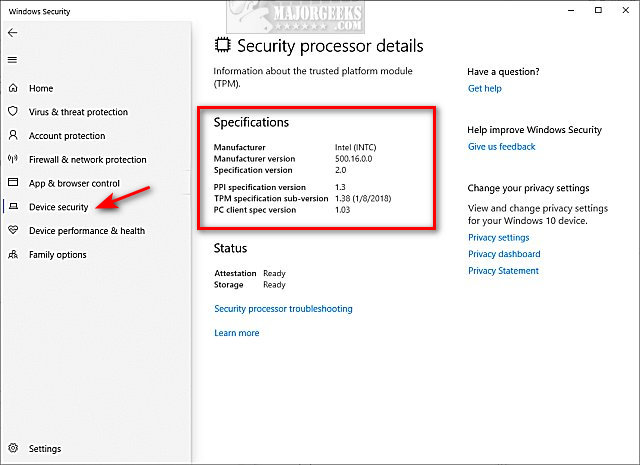
If your computer has TPM, the details can be found here.
2: How to Check for a Trusted Platform Module (TPM) Chip - Device Manager
Open Device Manager.
Expand Security devices for TPM details. If there are no Security Devices, then your PC does not have TPM.
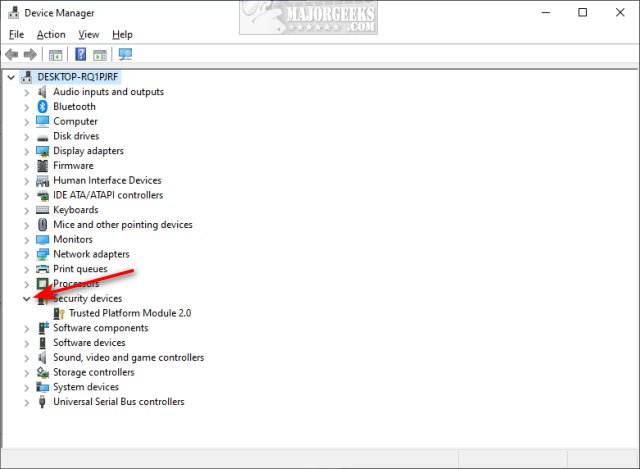
3: How to Check for a Trusted Platform Module (TPM) Chip - TPM Management
Press the Windows Key + R, type in tpm.msc, and press Enter.
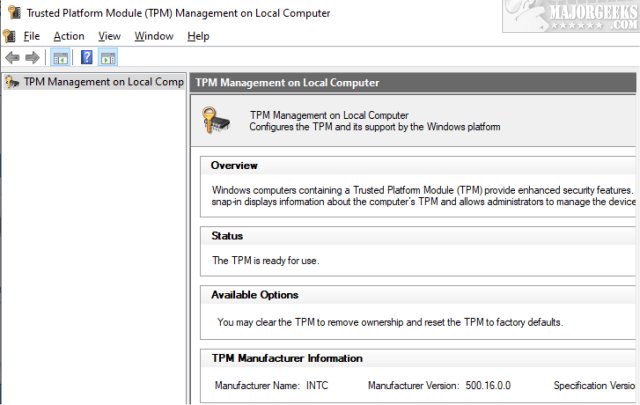
You will see Compatible TPM cannot be found if your PC does not have TPM.
4-5: How to Check for a Trusted Platform Module (TPM) Chip - Command Prompt or PowerShell
Open the Command Prompt or PowerShell.
Command Prompt - tpmtool getdeviceinformation
PowerShell - get-tpm
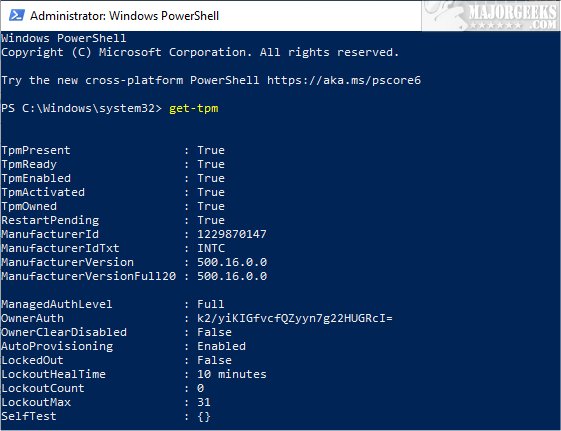
6: How to Check for a Trusted Platform Module (TPM) Chip - BIOS or UEFI
Reboot to check your UEFI (BIOS) settings for TPM. There are thousands of configurations, so we can't be sure where your settings are or which key will access the BIOS on reboot.
Reboot your computer, watch the screen for what key to press to enter the BIOS setup or Google for your computer brand or motherboard manufacturer.
Once in the BIOS, you'll need to look for TPM and enable it. Look near the bottom for keyboard options to navigate. Often, this is as simple as using your arrow keys to move and Enter to select.
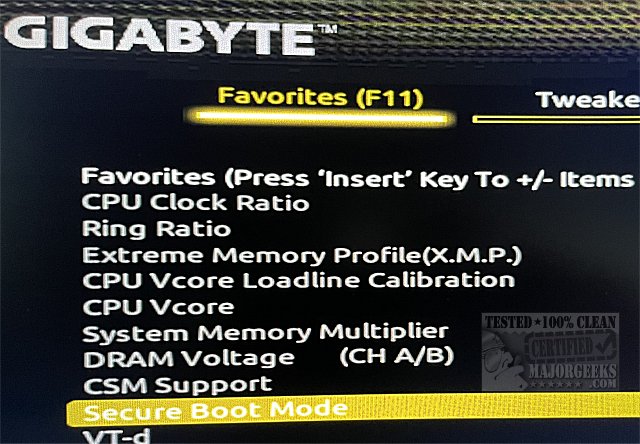
comments powered by Disqus
The Trusted Platform Module is a component on the desktop board specifically designed to enhance platform security above and beyond the capabilities of today’s software by providing a protected space for key operations and other security-critical tasks. Most computers built in the last 5-7 years will have a TPM chip.
TPM is called Intel Platform Trust Technology or Intel PTT for Intel and AMD Platform Security Processor or AMD PSP fTPM for AMD.
How to Bypass Secure Boot and Trusted Platform Module (TPM) 2.0 Requirements and Install Windows 11
1: How to Check for a Trusted Platform Module (TPM) Chip - Windows Security
Click on Windows Security in the lower-right corner of your screen. It looks like a shield.
Click on Device Security.
Click on Security processor details under Security processor.

If your computer has TPM, the details can be found here.
2: How to Check for a Trusted Platform Module (TPM) Chip - Device Manager
Open Device Manager.
Expand Security devices for TPM details. If there are no Security Devices, then your PC does not have TPM.

3: How to Check for a Trusted Platform Module (TPM) Chip - TPM Management
Press the Windows Key + R, type in tpm.msc, and press Enter.

You will see Compatible TPM cannot be found if your PC does not have TPM.
4-5: How to Check for a Trusted Platform Module (TPM) Chip - Command Prompt or PowerShell
Open the Command Prompt or PowerShell.
Command Prompt - tpmtool getdeviceinformation
PowerShell - get-tpm

6: How to Check for a Trusted Platform Module (TPM) Chip - BIOS or UEFI
Reboot to check your UEFI (BIOS) settings for TPM. There are thousands of configurations, so we can't be sure where your settings are or which key will access the BIOS on reboot.
Reboot your computer, watch the screen for what key to press to enter the BIOS setup or Google for your computer brand or motherboard manufacturer.
Once in the BIOS, you'll need to look for TPM and enable it. Look near the bottom for keyboard options to navigate. Often, this is as simple as using your arrow keys to move and Enter to select.

comments powered by Disqus






